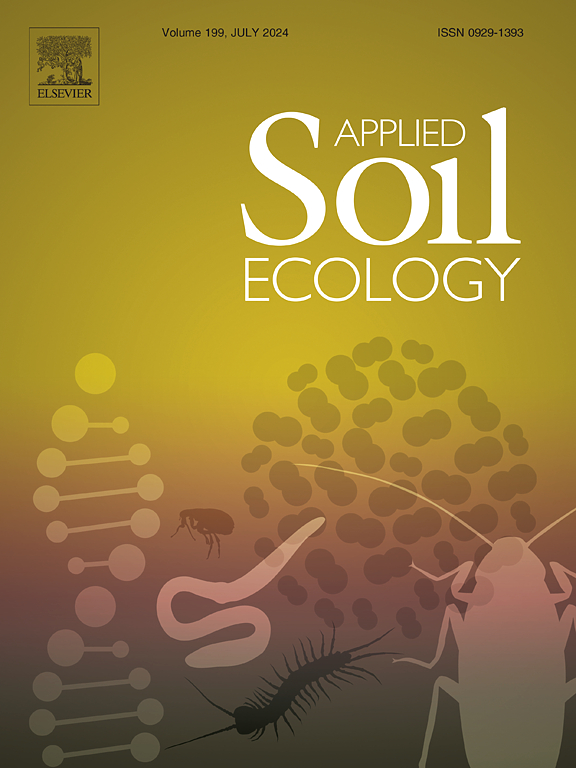Land-use change reshapes communities and guild structure of Collembola across a wide geographic range of the temperate zone
IF 4.8
2区 农林科学
Q1 SOIL SCIENCE
引用次数: 0
Abstract
Soil biodiversity is crucial for maintaining ecosystem functions and soil health, yet it is increasingly threatened by global change drivers such as land-use intensification. However, research on how land-use intensification affects belowground communities across biogeographic regions is scarce. This study investigates the response of Collembola, a highly abundant and ecologically significant soil animal taxon, to land-use changes across a broad latitudinal gradient (39°N to 48°N) in northeast China. Our findings show that agricultural intensification significantly reduces Collembola richness, density and Shannon-Wiener diversity, with pronounced differences between farmlands and planted forests. Notably, the response of Collembola of different life forms (epedaphic, hemiedaphic and euedaphic) to land use and climate factors varied markedly with latitude. In particular, epedaphic Collembola were negatively impacted by land-use intensification, while hemiedaphic Collembola were influenced by both land use and climate, with their density increasing with latitude. By contrast, euedaphic Collembola were largely unaffected by these factors. Agricultural land use also led to homogenization of Collembola communities and significantly altered their community composition, mainly due to shifts in epedaphic Collembola. Overall, our results indicate that agricultural land use reduces biodiversity, promotes biotic homogenization, and leads to distinct community compositions due to the varying response of Collembola fauna life forms to land-use change along latitudinal gradients.

在温带广泛的地理范围内,土地利用变化重塑了线虫群落和行会结构
土壤生物多样性对维持生态系统功能和土壤健康至关重要,但它日益受到土地利用集约化等全球变化驱动因素的威胁。然而,关于土地利用集约化如何影响跨生物地理区域的地下群落的研究很少。在39°N ~ 48°N较宽的纬度梯度范围内,研究了中国东北地区丰富且具有重要生态意义的土壤动物——蛭形虫对土地利用变化的响应。研究结果表明,农业集约化显著降低了线虫的丰富度、密度和Shannon-Wiener多样性,且在农田和人工林之间差异显著。值得注意的是,不同生命形式(大地、半大地和大地)的线虫对土地利用和气候因子的响应随纬度变化显著。其中,大地线虫受土地利用集约化的负向影响,而半大地线虫受土地利用和气候的双重影响,其密度随纬度的增加而增加。相比之下,土壤线虫基本上不受这些因素的影响。农业用地还导致线虫群落同质化,群落组成发生显著变化,这主要是由于地表线虫的变化。总体而言,研究结果表明,农业用地减少了生物多样性,促进了生物同质化,并由于线虫动物生命形式对土地利用变化的不同响应而导致了不同的群落组成。
本文章由计算机程序翻译,如有差异,请以英文原文为准。
求助全文
约1分钟内获得全文
求助全文
来源期刊

Applied Soil Ecology
农林科学-土壤科学
CiteScore
9.70
自引率
4.20%
发文量
363
审稿时长
5.3 months
期刊介绍:
Applied Soil Ecology addresses the role of soil organisms and their interactions in relation to: sustainability and productivity, nutrient cycling and other soil processes, the maintenance of soil functions, the impact of human activities on soil ecosystems and bio(techno)logical control of soil-inhabiting pests, diseases and weeds.
 求助内容:
求助内容: 应助结果提醒方式:
应助结果提醒方式:


